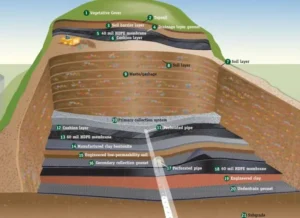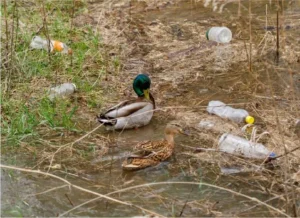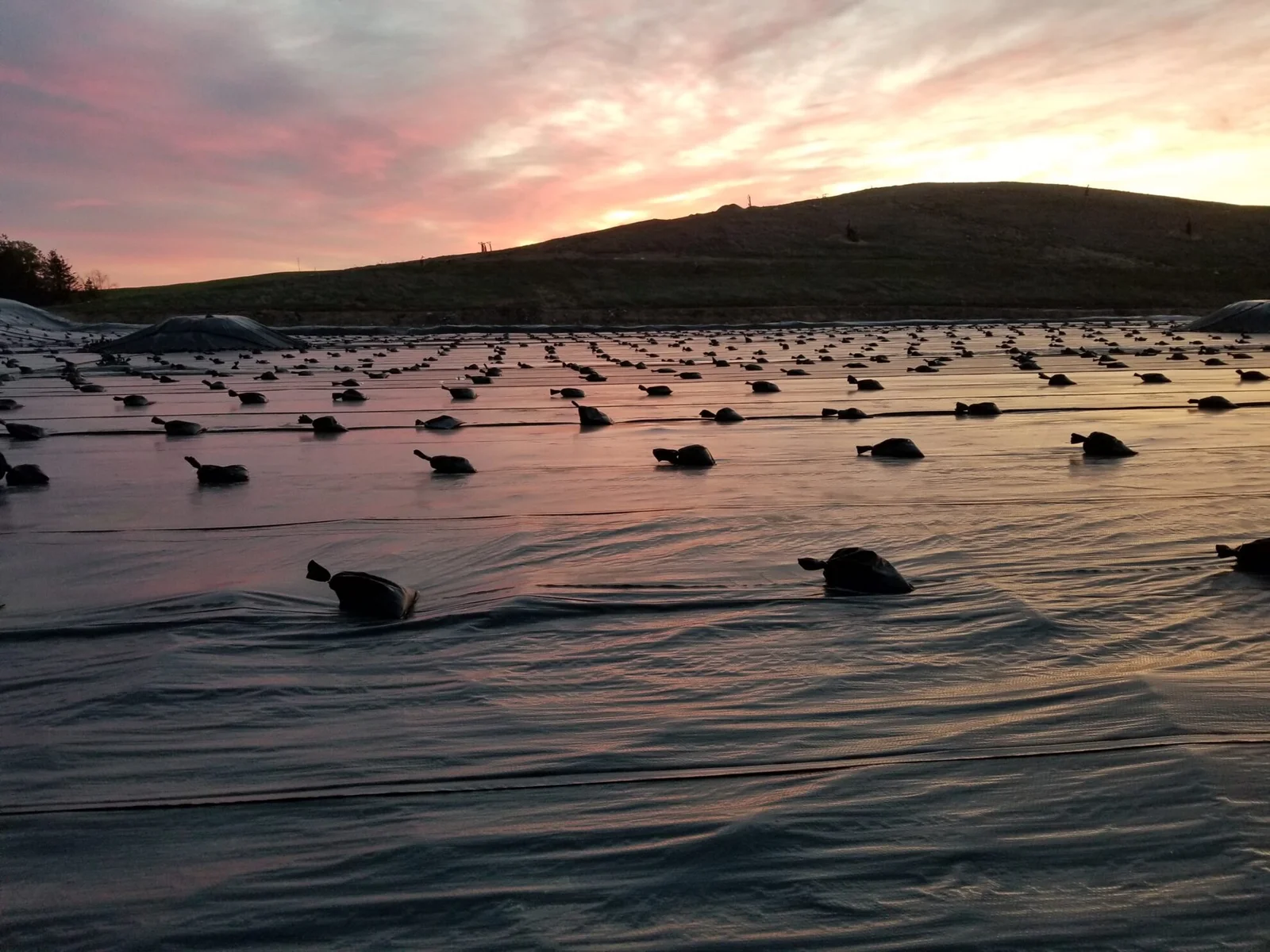Frequently Asked Questions
How can temporary landfill covers protect water quality?
Temporary landfill covers protect water quality by preventing rainwater infiltration, which reduces leachate formation and minimizes the risk of contaminants entering groundwater sources. This ensures safer environmental conditions and promotes sustainability.
What are the benefits of using geomembrane liners for landfill capping?
The benefits of using geomembrane liners for landfill capping include effective prevention of water contamination, reduction of leachate production, and enhanced environmental protection, all while promoting sustainability and potentially lowering long-term operational costs.
What types of landfill covers are available for environmental sustainability?
The types of landfill covers available for environmental sustainability include temporary geomembrane liners, which prevent water contamination and reduce leachate, and alternative daily covers that enhance site aesthetics and promote ecological balance.
How do temporary capping membranes reduce leachate in landfills?
Temporary capping membranes effectively reduce leachate in landfills by creating a barrier that limits water infiltration, thereby minimizing the amount of liquid that can interact with waste materials and generate harmful leachate.
What installation options are there for temporary landfill covers?
The installation options for temporary landfill covers include direct installation of geomembrane liners, utilizing anchored systems, and employing weighted covers. Each method ensures effective protection against water contamination while accommodating site-specific requirements.
How do temporary landfill covers enhance water quality?
Temporary landfill covers enhance water quality by preventing rainwater infiltration, which reduces leachate production and minimizes the risk of contaminants entering groundwater sources. This protective barrier promotes environmental sustainability and preserves local water quality.
What advantages do geomembrane liners offer for landfills?
The advantages of geomembrane liners for landfills include effective prevention of water contamination, reduction of leachate, and enhanced environmental protection, ultimately promoting sustainability and lowering long-term operational costs.
Which types of landfill covers promote sustainability?
The types of landfill covers that promote sustainability include geomembrane liners, which effectively prevent water contamination and reduce leachate, thus protecting the environment and enhancing landfill management practices.
How do capping membranes minimize leachate production?
Capping membranes minimize leachate production by creating a barrier that prevents rainwater infiltration and reduces moisture contact with waste materials, thereby limiting the generation of leachate and protecting groundwater quality.
What are the installation methods for landfill covers?
The installation methods for landfill covers include mechanical placement, where covers are deployed using heavy machinery, and manual installation, which involves workers positioning the liners by hand. Each method ensures proper coverage and adherence to environmental standards.
How effective are temporary covers in preventing contamination?
The effectiveness of temporary covers in preventing contamination is significant. They act as a barrier that reduces leachate production and minimizes the risk of water quality degradation, ensuring environmental protection.
What materials are used in landfill capping membranes?
The materials used in landfill capping membranes primarily include high-density polyethylene (HDPE), linear low-density polyethylene (LLDPE), and reinforced geomembranes, which provide durability and effective protection against water contamination.
How do landfill covers impact environmental health?
Landfill covers significantly impact environmental health by preventing water contamination and reducing leachate production. This helps protect local ecosystems and water quality, promoting sustainability and mitigating potential health risks associated with landfill operations.
What is the lifespan of temporary landfill covers?
The lifespan of temporary landfill covers varies based on materials and environmental conditions, typically lasting between 5 to 15 years. Proper installation and maintenance can enhance their durability and effectiveness in preventing water contamination.
How do geomembrane liners function in landfill applications?
Geomembrane liners function in landfill applications by acting as a barrier that prevents leachate and contaminants from seeping into the groundwater. They effectively control water quality, reduce environmental impact, and enhance the sustainability of landfill operations.
What regulations govern the use of landfill covers?
Regulations governing the use of landfill covers include federal and state environmental laws that mandate the use of approved materials and designs to prevent contamination and manage leachate. Compliance ensures the protection of water quality and public health.
How can temporary covers improve landfill management practices?
Temporary covers can significantly enhance landfill management practices by preventing water contamination, reducing leachate production, and promoting environmental sustainability. This leads to improved compliance with regulations and lower long-term operational costs.
What are the cost benefits of using geomembrane liners?
The cost benefits of using geomembrane liners include reduced leachate management expenses, lower long-term maintenance costs, and potential savings from preventing water contamination. These liners provide an efficient solution that enhances environmental compliance and sustainability.
How do different covers affect landfill gas emissions?
Different covers can significantly impact landfill gas emissions by either allowing gas to escape or trapping it. Effective covers, like geomembrane liners, minimize emissions and enhance environmental protection, while less effective options may lead to increased gas release.
What innovations exist in landfill cover technology?
Innovations in landfill cover technology include advanced geomembrane liners that enhance durability and impermeability, as well as smart monitoring systems that track environmental conditions, helping to improve water quality protection and reduce leachate effectively.
How do temporary covers support waste management goals?
Temporary covers support waste management goals by preventing water contamination and minimizing leachate production, which enhances environmental protection and promotes sustainability in landfill operations.
What challenges are associated with installing landfill covers?
The challenges associated with installing landfill covers include site preparation, ensuring proper sealing to prevent leaks, managing weather conditions during installation, and adhering to regulatory compliance. These factors can complicate the installation process and impact effectiveness.
How do landfill covers contribute to site rehabilitation?
Landfill covers contribute to site rehabilitation by preventing water infiltration, reducing leachate production, and promoting vegetation growth. These benefits enhance environmental restoration and facilitate the safe closure of landfill sites, supporting long-term sustainability efforts.
What role do covers play in leachate control?
The role of covers in leachate control is crucial. They prevent rainwater infiltration, thereby minimizing the generation of leachate and protecting water quality by reducing contamination risks associated with landfill sites.
How can temporary landfill covers be maintained effectively?
Effective maintenance of temporary landfill covers involves regular inspections for damage, ensuring proper drainage, and promptly repairing any tears or punctures in the geomembrane liners to prevent water contamination and leachate buildup.
What are the environmental impacts of landfill capping?
The environmental impacts of landfill capping include reduced water contamination, minimized leachate production, and improved air quality. Effective capping helps protect surrounding ecosystems and promotes sustainability by preventing harmful substances from entering the environment.
How do temporary covers influence groundwater protection?
Temporary covers significantly influence groundwater protection by preventing rainwater infiltration, which reduces leachate formation and minimizes the risk of contaminants entering the groundwater supply. This helps maintain water quality and promotes environmental sustainability.
What design considerations are important for landfill covers?
The design considerations for landfill covers include material selection, slope for drainage, resistance to environmental factors, and ease of installation. These factors ensure effective containment, minimize leachate, and protect water quality.
How do geomembrane liners compare to traditional covers?
Geomembrane liners offer superior protection against water contamination compared to traditional covers. They are more effective at reducing leachate, provide better durability, and are easier to install, making them a preferred choice for environmental sustainability.
What are the best practices for landfill cover installation?
The best practices for landfill cover installation include ensuring proper site preparation, selecting appropriate geomembrane materials, maintaining adequate drainage, and regularly inspecting the cover for integrity to prevent water contamination and leachate formation.







